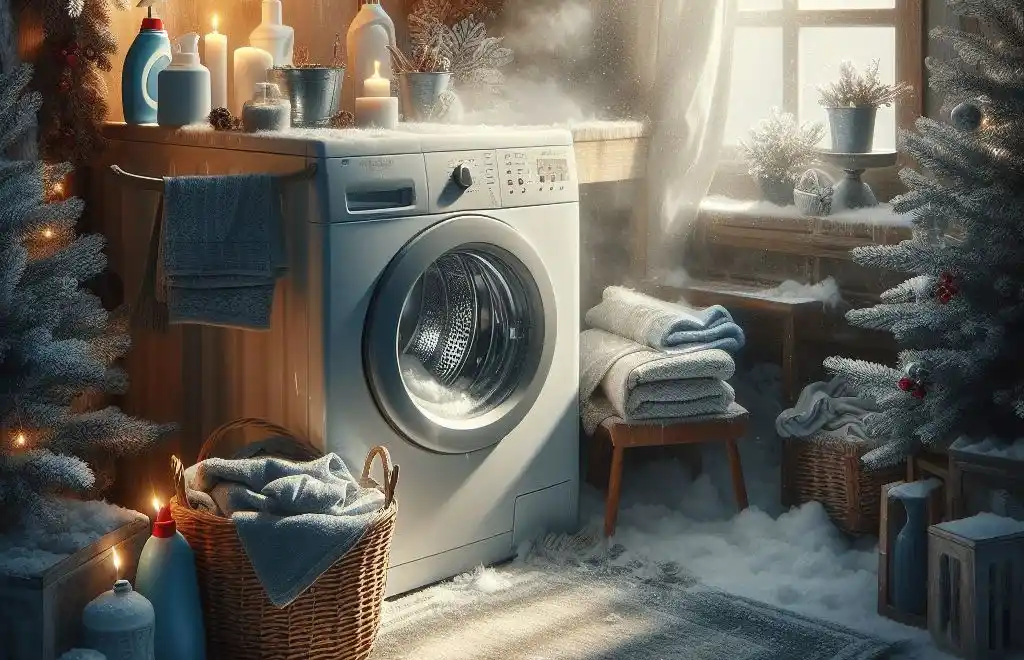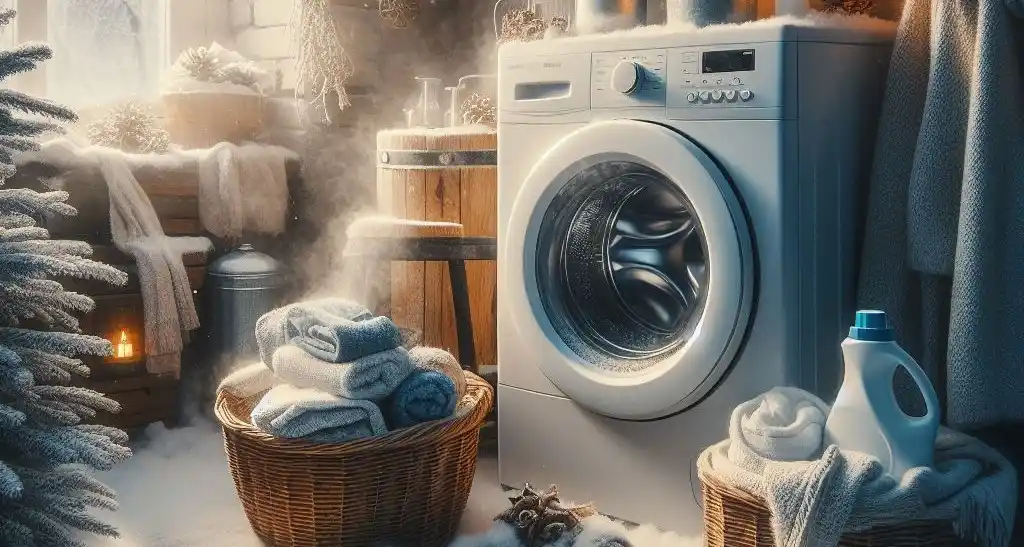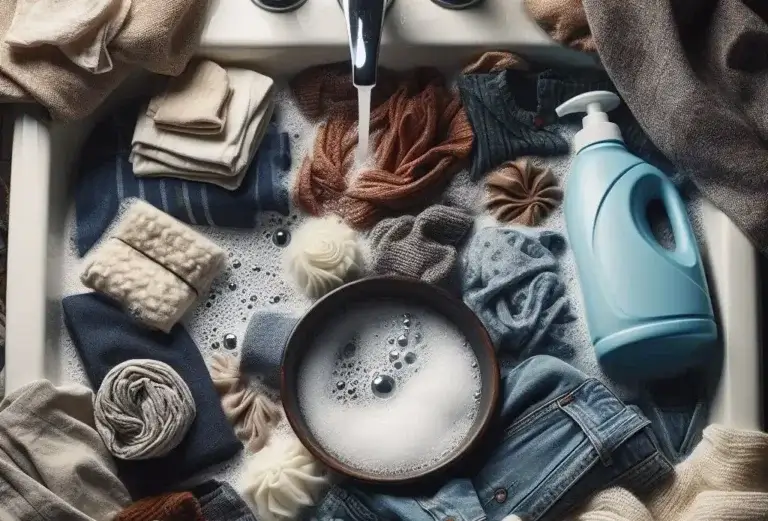Using Washing Machine in Freezing Temperatures: Guide for Can Extreme Cold Temperature Affect Your Appliance
With frigid winter temperatures bearing down, it’s understandable to have concerns about using your washing machine. Extreme cold can wreak havoc on home appliances, especially those containing water lines like washing machines. Freezing temps put your washer at risk for damage from frozen pipes, broken water valves, mold, and more.
However, with some preventative planning and cold weather care, you can keep laundering clothes even when there’s snow piled high outdoors. This comprehensive guide covers everything you need to know about using washing machine in freezing temperatures. Learn tips for winterizing your washer, signs of cold weather damage to watch for, what to do if pipes freeze, and more.
Table of Contents
How Does Cold Weather Affect Washing Machines?
Frigid temperatures and getting covered by snow can negatively impact washing machines, including the ice maker in several ways:
- Frozen pipes and water lines – If temperatures around pipes drop below freezing, water inside can freeze and expand, causing pipes to break. This stops water flow to the washing machine.
- Damaged water valves Extreme cold temperatures can cause the water intake valve to become brittle and crack, potentially releasing water onto the unit. This prevents the valve from opening to allow water into the machine.
- Mold and mildew – Small amounts of water left sitting in hoses, pumps, or the washing machine tub can freeze, thaw, and become moldy. This leads to foul odors, water damage, and potential appliance damage, especially in the basement where the temperature drops steeply.
- Component failure – Extreme cold places strain on electronic appliance components in washing machines. This can lead to early failure of control boards, pumps, motors, and other parts especially in ice makers.
Paying attention to freezing weather care for your washer helps minimize the risks of cold temperature damage.
Where to Locate Your Washer in Winter
Ideally, washing machines should be kept in temperature-controlled, indoor areas during freezing conditions. But for many homeowners, the washer resides in a chilly garage or basement where the temperature drops, making it vulnerable to plummeting external temperatures.
Here are a few location pointers for keeping washers operating smoothly despite winter’s chill:
- Position the washing machine against an interior wall Position the appliance, including the ice maker on an interior wall rather than an exterior wall to maintain the desired indoor temperature. Interior walls retain warmth better.
- Place the washer in an area that stays above freezing even when external temperatures plunge far below 32° Fahrenheit, the garage or in your basement can be kept above freezing with adequate heating. Kitchens or heated utility rooms, which maintain a temperature above freezing, are often suitable spots to prevent freezing in the garage.
- Ensure the washer sits with ample airflow Place the appliance away from the corners or alcoves, allowing air to circulate it, preventing broken pipes due to extreme cold. Good airflow helps prevent freezing.
- Keep gutters and roof drains clear around your HVAC unit to prevent ice and snow from accumulating. clear of debris so melting snow and ice don’t drip onto the washing machine.
- Insulate water lines and pipes Maintain a temperature above freezing in the pathways leading to and from the appliance to keep water flowing and avoid freeze-ups.
- Position the unit near or on top of a floor drain. This contains leaks and overflow if a hose bursts.
- If locating the washer in an unheated basement, consider investing in basement insulation and a space heater.
Even if you can’t relocate the appliance fully indoors, small adjustments to its positioning can help safeguard against winter damage.
Winterizing Your Washing Machine

Going beyond location adjustments, you can take further action to winterize your washing machine against the cold. Winterization prepares the appliance for sub-freezing conditions. This preparation includes the ice maker and ensures the unit is not vulnerable to extreme cold. This involves ensuring the desired indoor temperature and proper airflow on all sides. Here are handy winterizing tips:
Insulate Water Pipes
Exposed water pipes leading to washing machines are prone to freezing. Prevent broken pipes due to extreme cold by wrapping them with specially made pipe insulation wraps. These are fiberglass sleeves that slide over pipes to keep them warmer. Seal the ends with insulation tape. This keeps icy air from creeping in.
Disconnect Hoses
Detach hoses running from the water supply to the washing machine, this could prevent potential damage in the winter season. Place hose ends in a bowl to catch drips, then drape hoses across the machine rather than letting them sit on cold concrete floors. Disconnecting hoses reduces the risk of bursts and leaks.
Drain-All Water
Water left sitting stagnant in hoses and pumps will freeze and cause damage. Completely drain any residual water from the machine. Run the washer through a full cycle, then mid-cycle hit pause and manually advance the cycle to the final spin. This ensures as much water as possible is evacuated via the drain pump.
Clean with Vinegar
Mold and mildew flourish in damp cold conditions. Wipe the inner wash tub, door gaskets, and detergent dispenser with white vinegar solution to inhibit growth. Vinegar’s acidic properties make it tough for mold and fungi to gain a foothold.
Keep Door Open
Leave the washer door ajar so air circulates freely around the tub and metal drum. An open door helps moisture evaporate rather than fueling mold or freezing inside crevices.
Cover Unit
Throw a waterproof tarp or heavy plastic sheet over the top of the washing machine if located in an unheated basement or garage. This forms an outer barrier keeping cold air from reaching the appliance directly. Just avoid wrapping the unit so tightly that airflow is restricted.
With a bit of cold weather preparation, you can keep using your top-loading or front-loading washing machine even when the mercury plunges. Monitor weather forecasts daily so you know when to enact winterizing methods before an extreme cold snap hits.
Signs Your Washing Machine is Freezing

Pay attention to any of the following indicators that plummeting temperatures are negatively affecting your washer:
- Ice buildup on supply hoses or fill valve.
- The appliance, including the ice maker, makes strains or struggles when filling due to freezing temperatures, indicating the kitchen may be unable to maintain a temperature safe for it.
- Water trickles out slowly from the ice maker rather than flowing steadily, indicative of a frozen unit.
- The washing machine won’t spin properly.
- Strange noises emanate from the pump.
- Musty mildew smell inside the unit.
- The spin cycle seems off-balanced.
- Error code display lights up on the control panel.
- Water leaks underneath the machine.
- The exterior feels cold to the touch.
Don’t ignore freezing signs! Address problems promptly before permanent damage sets in the cold winter season.
What to Do If Pipes Freeze
Despite your best winterizing efforts, pipes supplying water to the washing machine still may freeze in extreme cold. Don’t panic. Here is a simple step-by-step process for thawing frozen washing machine pipes, including those of ice makers:
1. Turn Off the Power to the Washer
Unplug the power cord from the electrical outlet so the unit doesn’t accidentally turn on as pipes thaw. Frozen water hitting a running washing machine motor can damage components, especially when temperatures can damage your home appliances.
2. Open Faucets
Turn on the hot and cold faucets closest to the frozen section of the plumbing to drain the water. Leave faucets and ice makers running at a steady gentle stream to prevent freezing and subsequent water damage. This relieves pressure in the pipes.
3. Apply Heat
Use an electric heating pad, or a portable space heater, or pour warm water to warm the frozen pipe section and restore emergency heat; these measures can keep your pipes safe and protected. Never use an open flame to thaw pipes or appliances! It’s not only dangerous but can also damage your home appliances.
4. Check Frequently
Check pipes regularly to gauge thawing progress. As soon as you notice water begin trickling from faucets or ice makers, shut them off to prevent water damage. This prevents pipes from bursting once the ice blockage dislodges.
5. Inspect for Damage
Inspect pipes and hoses for cracks or splits once water begins flowing again. Also, check for water leaking from the fill valve or underneath the washing machine. Make repairs before using the washer again.
With proper materials and procedures, safely thawing frozen pipes is manageable. But prevention is easier through diligent winterizing and cold weather care all season long, ensuring your home appliances are kept above freezing.
FAQs: Using a Washing Machine in Freezing Temperatures
Do you have lingering questions about running a load or operating a washer in frigid conditions? Need answers about running a load in winter or how temperatures can affect your washer? Here are some frequently asked questions.
Is it safe to run my washing machine when it’s below freezing outside?
Yes, it is safe provided you take proper precautions – winterize the machine, including the ice maker, insulate pipes, keep your pipes above freezing temperatures, and position the unit properly, monitor for any signs of freezing. during regular winter weather. With the right preparations, cold temperatures won’t harm your washer.
Where is the best place to locate a washing machine in winter?
The ideal location is indoors within a heated space not vulnerable to freezing. Barring that option, situate the unit against an interior wall rather than the exterior wall. Kitchens, mudrooms, and enclosed porches are often warm enough, provided the temperature doesn’t drop below 32° F.
Why does my washer struggle to fill with water in winter?
Slow or sputtering water flow is likely due to ice blockages in supply pipes or hoses; remember to keep your pipes above freezing in the winter season. Thaw pipes gradually using warm (not hot) water. Check fill hoses and the water valve for cracks allowing water to freeze. Insulating all water lines helps prevent this issue.
What should I do if my washing machine or water pipes freeze?
First, turn off the power to the washer at the breaker box before administering any emergency heat during temperature drops below freezing. Then point a portable space heater at frozen sections of pipe or place warming pads around them. Never use direct flames. Open nearby faucets to relieve pressure as the ice melts. Once pipes thaw, check carefully for splits or leaks before using the washing machine again.
How can I keep pipes from freezing again?
Insulate all exposed water pipes leading to the washing machine. It is crucial to seal insulation tightly at joints, particularly during temperature drops below freezing. Let faucets drip during extreme cold snaps so the water stays moving within pipes. Keep garage or basement doors closed to retain warmth, thus keeping your home appliances safe and protected from freezing temperatures. Consider adding more heating sources near pipes in the garage or in your basement to keep them above freezing.
In Conclusion: Don’t Let Jack Frost Stop You From Doing Laundry
While freezing winter conditions can be unpleasant, taking appropriate measures helps maintain the usage of washing machines despite the temperature drops below freezing. Position equipment properly, insulate or disconnect hoses, thoroughly winterize the appliance, and diligently monitor for any symptoms of ice buildup or blockages. React promptly if pipes freeze to get them thawed before permanent damage sets in.
A bit of vigilance goes a long way in protecting washing machines from old man Winter’s grasp. Don’t let subzero temperatures or getting covered by snow stop you from running needed laundry loads. With proper precautions, washers can hum along normally even amid piles of snow drifts and icicles!








